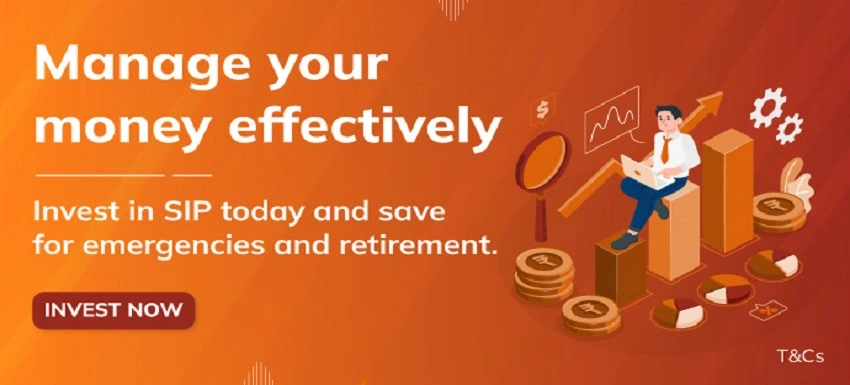THE
ORANGE
HUB
6 Ways To Measure Mutual Funds Risk

Investing in Mutual Funds is a popular way to grow wealth, but it comes with its own set of risks. To make informed investment decisions it is crucial to understand these risks and how to measure them. This blog will explore the six key risk measures used in analysing the Equity Mutual Funds: Beta, Alpha, R-squared, Standard Deviation, Sharpe Ratio and Sortino Ratio.
The portfolios for comparison
Risk essentially denotes the probability of an investor incurring losses, either partial or total, of the original investment. This risk arises from multiple sources, such as instability in the economy, shifts in the political scenarios and specific challenges within certain industries. These elements can significantly impact the performance of the Mutual Funds. Fortunately, the field of investment offers tools and metrics to measure these risks. By measuring and understanding these risks, investors are better equipped to make informed decisions, balancing potential returns against the likelihood of loss(es), thereby aligning their investment choices with their personal risk tolerance and financial goals.
1. Beta - Assessing volatility
Beta is a measure of the Mutual Fund's volatility relative to the overall market or a specific benchmark index. A Beta value of 1 indicates that the fund's price will move in sync with the market. A Beta greater than 1 signifies that the fund is more volatile than the market – it will experience larger fluctuations. Conversely, a Beta less than 1 suggests that the fund is less volatile. For conservative investors who prefer stability, funds with a low Beta are more attractive. However, it is important to remember that Beta is a relative measure and should be used as one of the several factors in investment decision making, not the sole criterion.
2. Alpha - Performance indicator
Alpha is a metric used to understand a Mutual Fund's performance relative to its benchmark index. It is not primarily a risk measure but is often used in conjunction with Beta. A positive Alpha indicates that the fund has performed better than its benchmark, suggesting effective management and strategy. A negative Alpha means the fund has underperformed in comparison to its benchmark. Positive Alpha is particularly appealing in actively managed funds as it reflects the fund manager's ability to generate extra returns above the benchmark. However, Alpha is based on the historical data and does not guarantee future performance.
3. R-Squared - Correlation with the benchmark
R-squared measures how closely a fund's performance correlates with its benchmark. It ranges from 0 to 100, where a score of 100 denotes perfect correlation. A high R-squared value in an actively managed fund may indicate that the fund's performance is very similar to its benchmark, suggesting a lack of unique strategy. Conversely, a lower R-squared might imply a more distinctive approach or divergence from the benchmark trends. This measure can be particularly useful in understanding the diversification benefits a fund might add to the portfolio.
4. Standard Deviation - Understanding volatility
Standard Deviation quantifies the variability or volatility of a fund's returns around its mean (average) return. A higher Standard Deviation indicates greater volatility and therefore, higher risk, as the fund's returns fluctuate more widely from its average. This measure is essential for understanding the level of uncertainty associated with a fund's return expectations. Risk-tolerant investors might prefer funds with higher Standard Deviations in pursuit of higher returns, while risk-averse investors may opt for funds with lower Standard Deviations for more predictable performance.
5. Sharpe Ratio - Risk-adjusted returns
The Sharpe Ratio evaluates a fund's risk-adjusted performance. It is calculated by subtracting the risk free rate of return from the fund's returns and then dividing this result by the fund's Standard Deviation. A higher Sharpe Ratio is generally preferable, indicating that the fund's returns are due to the wise investment decisions rather than excessive risks. It helps investors understand if the higher returns of a fund are adequate compensation for the additional risks taken.
6. Sortino Ratio - Focusing on the downside risk
The Sortino Ratio is similar to the Sharpe Ratio but with a key difference: it focuses solely on the downside or negative volatility of the fund. This makes the Sortino Ratio highly relevant for conservative investors who are more concerned about potential losses rather than the overall volatility. The ratio is calculated by subtracting the risk free rate from the fund's return and dividing it by the fund's downside deviation. A higher Sortino Ratio indicates a lower probability of large losses, making it a crucial tool for evaluating the risk of negative returns.
Applying risk assessment measures in the fund selection
When choosing Mutual Funds, it is essential to align your selections with both your risk tolerance and investment objectives. If you are risk-averse, meaning you prefer stability over higher potential returns with associated risks, prioritise funds with a low Beta. A low Beta indicates that the fund is less volatile compared to the market. Additionally, seek out funds with a high Sortino Ratio. This ratio emphasises on the fund's ability to limit downside risk, which is particularly important if you are cautious about the potential losses.
Conversely, if you are inclined towards taking risks for getting higher returns, focus on funds with a high Alpha and Sharpe Ratio. A high Alpha suggests that the fund has historically outperformed its benchmark, signifying potentially higher returns. The Sharpe Ratio is equally crucial as it measures the risk-adjusted return; a higher ratio indicates that the fund's returns are more attributable to smart investment decisions rather than excessive risk taking.
Conclusion
Understanding and applying these six risk measures can significantly aid in selecting the suitable Mutual Funds. Remember, no single measure provides a complete picture. It is the combination of these metrics that will offer a comprehensive view of the fund's risk profile and potential performance.
Scroll to top



